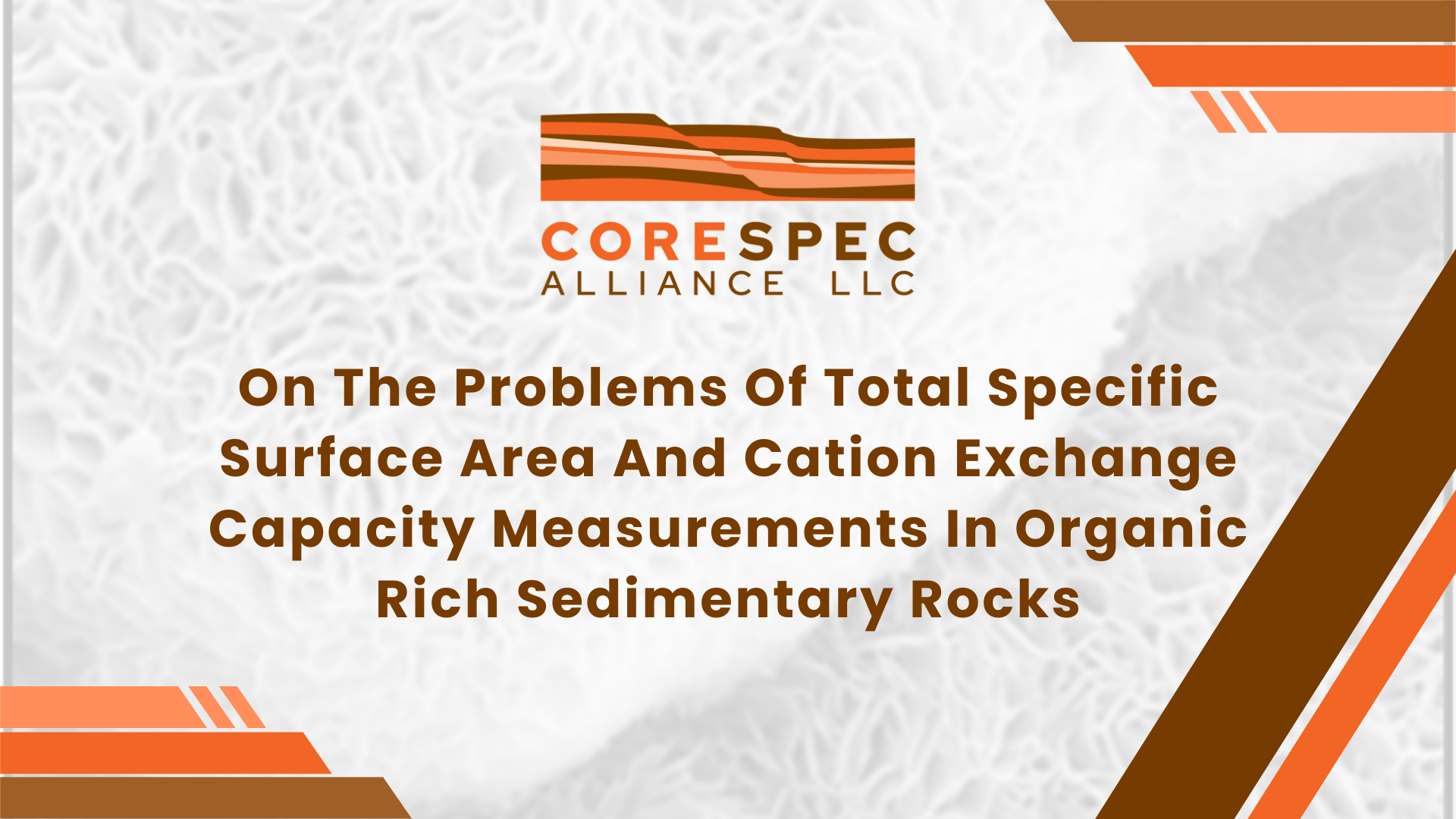ON THE PROBLEMS OF TOTAL SPECIFIC SURFACE AREA AND CATION
EXCHANGE CAPACITY MEASUREMENTS IN ORGANIC-RICH SEDIMENTARY
ROCKS
ARKADIUSZ DERKOWSKI1,* AND THOMAS F. BRISTOW2
1 Institute of Geological Sciences, Polish Academy of Sciences, INGPAN, Senacka 1, PL-31002 Krakow, Poland 2 NASA Ames Research Center, Moffett Field, CA 94035, USA
Abstract—The increasing exploration and exploitation of hydrocarbon resources hosted by oil and gas
shales demands the correct measurement of certain properties of sedimentary rocks rich in organic matter
(OM). Two essential properties of OM-rich shales, the total specific surface area (TSSA) and cation
exchange capacity (CEC), are primarily controlled by the rock’s clay mineral content (i.e. the type and
quantity). This paper presents the limitations of two commonly used methods of measuring bulk-rock
TSSA and CEC, ethylene glycol monoethyl ether (EGME) retention and visible light spectrometry of
Co(III)-hexamine, in OM-rich rocks. The limitations were investigated using a suite of OM-rich shales and
mudstones that vary in origin, age, clay mineral content, and thermal maturity.
Ethylene glycol monoethyl ether reacted strongly with and was retained by natural OM, producing
excess TSSA if calculated using commonly applied adsorption coefficients. Although the intensity of the
reaction seems to depend on thermal maturity, OM in all the samples analyzed reacted with EGME to an
extent that made TSSA values unreliable; therefore, EGME is not recommended for TSSA measurements
on samples containing >3% OM.
Some evidence indicated that drying at 5200ºC may influence bulk-rock CEC values by altering OM in
early mature rocks. In light of this evidence, drying at 110ºC is recommended as a more suitable pretreatment for CEC measurements in OM-rich shales. When using visible light spectrometry for CEC
determination, leachable sample components contributed to the absorbance of the measured wavelength
(470 nm), decreasing the calculated bulk rock CEC value. A test of sample-derived excess absorbance with
zero-absorbance solutions (i.e. NaCl) and the introduction of corrections to the CEC calculation are
recommended.
Key Words—Bitumen, CEC, EGME, Kerogen, Organic Matter, Shale, Specific Surface Area. DTG


No Comments